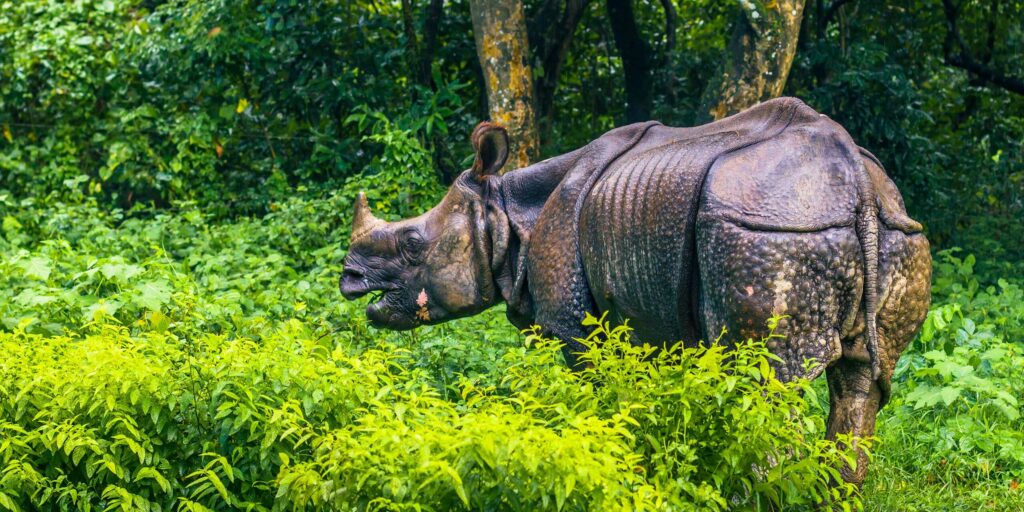Kathmandu – Each evening, rhinos can be seen grazing along the coastal area of the Rapti River in Patihani, West Chitwan, much to the delight of visitors to Amrela Street in Bharatpur Metropolitan City-22. The presence of these majestic animals has brought an unexpected transformation to the local ecosystem.
Recently, a notable increase in plant growth has been observed in the picturesque grasslands along the Rapti River coast towards Patihani. Specifically, a species known as Vellar, or Rhino Apple, has been flourishing, transforming the area into a budding forest. Remarkably, these plants have not been deliberately planted or transplanted; their proliferation is attributed to the rhinos’ natural behavior.
Rhino dung plays a crucial role in this phenomenon. The one-horned rhinoceros, a rare and protected species, spends its days grazing in the park and comes to the Rapti River to drink in the evenings. After hydrating, the rhinos graze in the coastal area and defecate there. Given that rhinos typically defecate in the same location, the seeds of the Rhino Apple plant are effectively sown in these areas.

Rhinos are particularly fond of the green leaves and seeds of the Vellar plant, often prioritizing this food source over others. As they consume the fruit and later defecate, the seeds within the dung find fertile ground to sprout and grow. Bishnuraj Mahato, the ward president of Bharatpur-22, noted that during the dry season, the water spreads these seeds across the grasslands, contributing to the forestation process.
“This area used to be a football playing field that would occasionally flood or be covered in sand. Now, with the movement of rhinos, Vellar trees have started to grow,” said Mahato. “In the next few years, we anticipate the emergence of an Acacia forest.”
Ganesh Prasad Tiwari, information officer of Chitwan National Park, emphasized the critical role animals like rhinos play in seed dispersal and forest development. Research expert Dr. Baburam Lamichhane echoed this sentiment, highlighting the importance of rhinos in plant development and expansion. “Various studies have shown that seeds from different fruits consumed by rhinos grow alongside their dung,” Dr. Lamichhane explained. “The combination of soil, fertilizer, and seeds makes it easier for plants to sprout and grow.”
Dr. Lamichhane added that rhino and deer dung scatter seeds in various locations, aiding in their germination. “Rhinos do not fully digest certain foods, so seeds remain viable and germinate where rhinos defecate,” he said. “We are continuing to investigate this process, and detailed reports will be published in due course.”
Other wild animals also benefit from the plants and organic materials grown in rhino dung. The dung enhances soil fertility, and the resulting plants provide essential nutrients for other wildlife. This natural cycle highlights the integral role of rhinos in maintaining and nurturing the ecosystem along the Rapti River.















